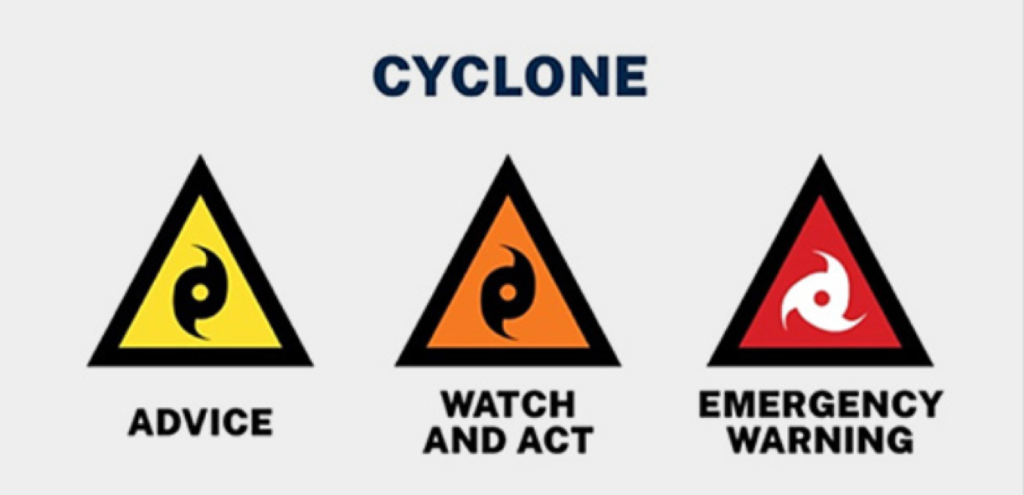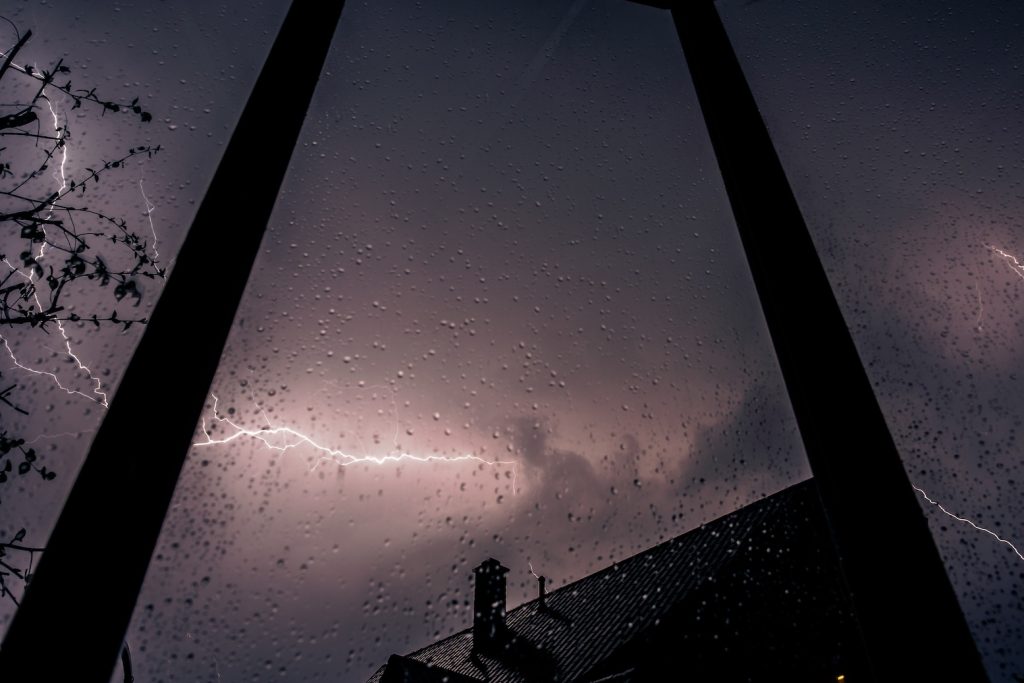A cyclone warning has just been put in place for our area, and it’s time to dust off your supplies and get prepared for the next few days. You may be aware of what you need in your basic kit, such as a torch, water and fresh batteries. You probably know to fill your car with petrol, to tape down your windows and to bring in any furniture from outside the home. If you’re looking for a quick reminder and a basic cyclone-ready checklist, click here.
But for someone with a disability, things can be a bit more tricky around cyclone season. You may have special needs that won’t be found on any official checklist, such as an extra supply of catheters, or a plan for evacuating using a wheelchair. You may be feeling anxious about how you’ll cope if a cyclone hits, or be worried if you’ll be able to contact people in an emergency.
Some good planning and some extra stockpiling could make all the difference to your health and wellbeing, if a cyclone does hit. Here at Embrace we support all our clients to be prepared for natural disasters, including cyclones. We are creating a planning tool to help you choose what suits you best, and can be tailored to your unique needs and abilities. As soon as our planning tool is up and functional, we’ll let you know. But for now, read on to get cyclone ready.
The New Cyclone Warning System
You’re probably aware that the WA government has changed their cyclone warning system. Gone are the colour-coded alerts: they’ve been replaced with “Advice”, “Watch and Act” and “Emergency Warning”.

Part of being cyclone-ready is knowing what these three new levels mean, and how they impact you. As a basic guide, “Advice” is about listening out for information about a cyclone that is forecast, and preparing things like your emergency kit; “Watch and Act” is for putting your cyclone plan into place because the cyclone is coming soon; and the “Emergency Warning” is for when the cyclone has hit and you need to take shelter. For more info on the new alert system, visit https://www.dfes.wa.gov.au/hazard-information/cyclone/prepare?tab=local
Before the cyclone
Before the cyclone hits is your time to prepare all those last-minute things on your list, such as double-checking your kit, getting online to the Emergency WA website, bringing any pets inside, and making sure you have some cash in your wallet. Now is also the time to be preparing for any special needs you may have, such as requiring electricity to run a vital piece of equipment, or having enough food for a guide dog, or making sure you have enough medicine or pharmacy supplies like incontinence pads. It’s a great time to go over your personalised checklist and tick off each item. This will help you feel prepared physically as well as mentally and emotionally.
If you have been told to evacuate, this is time to use your checklist to grab everything you will need to stay a few nights in a shelter. You may need to stay in emergency accommodation for several weeks afterwards, so you’ll need to pack for this too. If you are evacuating, there’s some things you won’t need to take, such as drinking water, but you’ll need to make room in your bag for any items which won’t be readily available in a typical shelter, such as your ventilator or strapping for a limb.
If you know the cyclone is just about to hit, now is the time to turn off the electricity mains, gas and water if you’ve been advised to.

During the cyclone
Once the Emergency WA website has issued a red “Emergency Warning” it will be too late to leave your home. You will need to choose the strongest part of your house to stay in, so keeping away from doors and windows is advised. Have your emergency kit close by, including any medicines and generators you may need. It’s now time to break out your stash of treats (we love chocolate here at Embrace!), turn the radio on if you can, and be patient while the storm passes.
You may hear a lot of howling noises, and might witness glass shattering or other loud, dangerous things happening. There will be a lot of rain, wind and clattering sounds that you might not have heard before. If loud noises affect you, now is the time to put some earplugs in or some noise-canceling headphones on. Many cyclone survivors report that the howling noise of the wind made them feel extra anxious, so try to remember that these noises are a normal part of the cyclone and that they will pass eventually.

After the cyclone
Once you start to hear more rain than wind again, you’re most likely on the other side of cyclone, so now is a good time to check in with the radio and/or the Emergency WA website to track how the cyclone is moving. Do not open any doors until you know it is safe to do so. The website will outline what damage has occurred outside, and whether you need to take extra precautions when leaving your home. It could still be dangerous outside with things such as powerlines down, trees fallen or flooding occurring, so you really must check with official sources before leaving your home.
If you’re wheelchair bound or find walking challenging, it might still be dangerous to leave the home, even after it has been deemed “safe” to go outside: the ground may be uneven, or your usual routes may be closed. It’s best to call someone to double check your area for you, and if you have trouble getting a friend or family member to help you can always call us here at Embrace.
What’s Your Plan?
Now is the time to have a plan ready. If this is your first cyclone, part of being prepared might be to do some extra research on what to expect during a cyclone. A great resource is this page which has photos and info about what may happen.
Think about your unique circumstances. If you live in a free-standing house, you’ll need to bring in furniture and anything else that could fly about: these items can smash into windows or roofs. Ask a friend or neighbour to assist you if need be. If you’re in an apartment you’ll still need to tape down your windows and have water ready. Again, a neighbour might be happy to help if you need it. If you live with pets you’ll need to arrange food and water for them, or get someone to do it for you. If you are living alone now is the time to check in with family and friends and discuss your cyclone plan with them. If you need medical equipment, get it ready and have a stock of supplies in case the shops are closed for a while.
You don’t need to be alone: ask a neighbour, friend or family member to stay with you during the cyclone. And as soon as it’s safe to do so, Embrace carers can visit and assess your needs. We’re here to help!